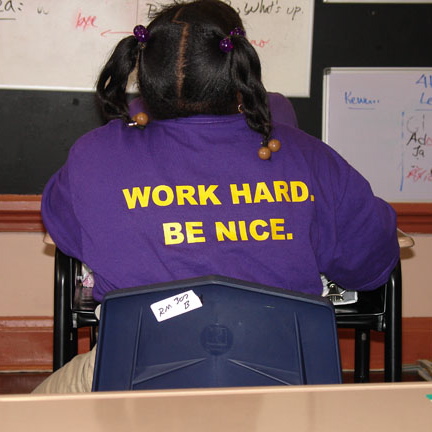
By Folwell Dunbar, The Lens contributing opinion writer |
Over the years I have had an opportunity to conduct quality reviews of numerous charter schools here in Louisiana and throughout the country. Working with teams of national and local experts, we look at everything from leadership and assessment practices to technology integration and community engagement. Each review identifies strengths, challenges, and trends and provides the school with developmental feedback. Among the most successful schools that I have reviewed, there are at least four common characteristics: 1) a culture of high expectations, 2) tight systems, 3) extensive feedback loops, and 4) incredible talent.
“You gotta start with culture,” a school leader once told me. “It’s one of the ideas we borrowed from parochial schools.” From daily shout-outs and the posting of ambitious goals, to naming classrooms after the universities attended by their teachers and referring to students as “scholars,” these schools do everything imaginable to meld and support a positive learning environment. All stakeholders are committed to the school’s mission, vision and core beliefs; everyone has high expectations and no one makes excuses.
I once visited a school where it took a class over half an hour to use the bathroom. This would never happen at a high-performing school. Time is too valuable. From having kids read in line to offering incentives for taking care of business more quickly, there would be a system – a really tight one. Classroom transitions, lesson plans, board meeting agendas, professional development, financial controls, back-office support, it’s all designed and implemented with efficiency, effectiveness and a single goal in mind: to maximize learning. It’s basically Taylorism for education. (Henry Ford would be impressed.) “We’re starting from behind,” a charter school founder said. “There’s a great deal of urgency. It’s why we sweat the small stuff!”
To find my favorite principal, I always know where not to look: his office. Instead, he spends most of his time in the classroom providing teachers with feedback on their instruction. “This is where the action is,” he says. “It’s where we make a difference. We’ve gotta be at the top of our game!” The highest performing charters utilize extensive feedback loops to improve teaching and learning. They pore over student performance, curriculum, perception and demographic data, make adjustments, and then measure again. “It’s all about the data,” a school’s Knowledge Czar (their term) said. “Ya have to know where you are to get where you’re going.”
“We look for folks with bandwidth,” a charter school leader told me. “They need to have thick skin – take criticism well. They must be malleable,” said another principal. (See feedback loops.) “Highly qualified is fine, but it’s highly effective that matters most,” said another. The best charter schools all put a premium on “human capital.” Tapping Teach for America, The New Teacher Project, New Leaders for New Schools, local and national universities, other schools and other professions, they look near and far for the very best and the brightest. Echoing Good to Great, Jim Collins’ book analyzing corporate self-improvement, they find a way to “get (and keep) the right people on the bus.”
When asked to explain his school’s extraordinary results, a principal admitted, “It’s not magic. And, it has nothing to do with being a charter. Like any good school, private or public, we just do whatever it takes.” For successful schools like KIPP, Akili, Sci Academy, and Lafayette, “whatever it takes” definitely includes a culture of high expectations, tight systems, extensive feedback loops and incredible talent.
Folwell Dunbar reviews charter schools around the country for SchoolWorks, an education consulting group.
